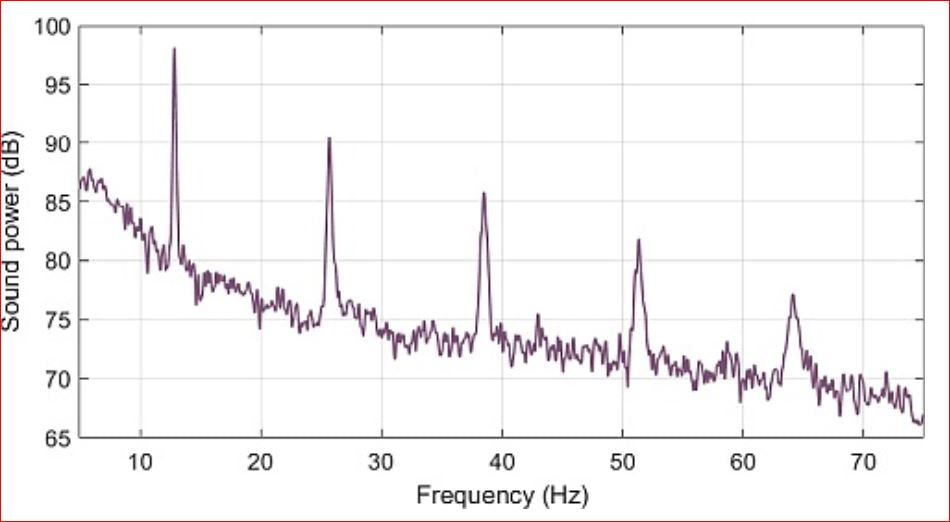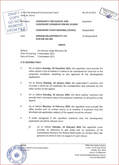|
While the sound of a helicopter may have many rushing to their windows to identify the make of the aircraft, the majority of people feel an intense sense of annoyance, or more accurately, disruption or anxiety. So, what is it about helicopters that is so intrusive, placing people and animals outside their comfort zone? The answer is Infrasound otherwise known as the 'fear frequency'. It's all explained in the following article 'The Fear Frequency' by Mark Pilkington ( The Guardian 6 Oct 2003) "Have you ever wondered what a ghost sounds like?" Engineer Vic Tandy may already know. "The key here is frequency: 19hz is in the range known as infrasound, below the range of human hearing, which begins at 20hz. Engineer Vic Tandy learned that low frequencies in this region can affect humans and animals in several ways, causing discomfort, dizziness, blurred vision (by vibrating your eyeballs), hyperventilation and fear, possibly leading to panic attacks". In the early 1980s, Tandy was working in a laboratory designing medical equipment. Word began to spread among the staff that the labs might be haunted, something Tandy put down to the constant wheeze of life-support machines operating in the building. One evening he was working on his own in the lab when he began to feel distinctly uncomfortable, breaking into a cold sweat as the hairs on the back of his neck stood on end. He was convinced that he was being watched. Then, out of the corner of his eye, Tandy noticed an ominous grey shape drifting slowly into view, but when he turned around to face it, it was gone. Terrified, he went straight home.
A more recent investigation took place in an allegedly haunted 14th-century pub cellar in Coventry, where people have reported terrifying experiences for many years, including seeing a spectral grey lady. Here Tandy also uncovered a 19hz standing wave, adding further evidential weight to his theory. In an interesting parallel, researchers have recorded that, prior to an attack, a tiger's roar contains frequencies of about 18hz, which might disorientate and paralyse their intended victim. Is this the sound of fear itself?" We have uploaded some articles of interest on the subject here. You can listen to the sound of 20 Hertz, the theoretical minimum frequency a human can hear. An article in Vertical magazine 'The science behind helicopter noise — and how the industry is working to reduce it ' identifies "... two locales where helicopter noise seems to be a major issue. In urban areas, you have a multitude of helicopter operations: law enforcement, medical transport, local news, some business transportation, and tourism. And then there’s the more remote, scenic tourist destinations, where those on the ground object to aircraft interrupting their experience in an otherwise serene wilderness. Typically, helicopter tours are the main source of annoyance in these places. The majority of this information can be logically applied to what is anticipated from heliport activities on 2224 Tully Mission Beach Road. The Kestral Aviation information sheet states " We will be predominately using our Bell 206L3 Long Ranger and Sikorsky S-76 helicopters, and on rare occasions, our Bell Medium (212 or 412) fleet when need requires (such as in response to natural disasters). Vertical magazine informs "...The Bell 212 generates high levels of impulsive noise..." The article Dynamics of rock arches shows a plot of the sound spectrum generated by a two-blade Bell 206 helicopter (below). In it you see the first frequency peak at 13 Hz with a series of overtones at integer multiples Thank you to Margaret Moorhouse from ASH for sharing this information.
2 Comments
At the C4 general meeting held Friday on 3rd July, the C4 theatrette was overflowing with community members interested in an update on the court appeal. C4 president, Peter Rowles, recapped on the court process saying the respective parties had lodged their relevant documents for the appeal, and that C4’s solicitors had engaged experts in the areas of;
Peter reported that although details of the Appeal could not be discussed, he could say that the parties were in discussions. Peter went on to say that Mission Helicopters would have helicopter operations experts design trials to demonstrate the noise levels from the activities being planned for the Heliport site. This forms part of the directions order within Stage 4 of the appeal process. Council’s Approval for Material Change of Use (MCU) is not only for the Air services (listed below), it also allows for “other related entities operated by the Directors / Shareholders of the applicant/owner” (CCRC Planners Report 27 Jan 2021). Given Mission Helicopters’ high profile and operational connections across the national and international aviation industry, the reality of the Council’s reprehensible MCU Approval is that Mission Helicopters’ operational possibilities are left wide open. Air Services include:
To be relevant to the Mission Helicopters Proposal, the operational trials mentioned by Peter would presumably have to include all the possible operational aspects of the above. Another important consideration is what flight path will the trials be based on? In the CCRC Decision Notice (27 Jan 2021) (where CCRC mistakenly refer to the applicant as Mission Beach Helicopters) the approval conditions state “. the applicant/owner ‘must ensure”…”helicopters will head directly east over the Coral Sea prior to heading towards intended destinations (emergency situations excepted) as per the Mission Beach Helicopters (sic) Approach/Departure Waypoint Flight Plan received by Council on 14th October 2020…” Yet the Waypoint Flight Plan received on that date (below left) shows a quite different flight path, angled considerably to the south. The actual direct east flight path (below right) shows the impact zone covers the whole of the Conch Street residential area. MBH Approach/Departure Waypoint Flight Plan Actual Direct East Flight Path In any case, local councils and Approval conditions may not legally control take-off paths of helicopters. During the meeting, Peter also commented that helicopters were already operating at Mission Beach and that Mission Helicopters can already operate helicopters from their property “…whether we like it or not…”. Such comments are of course irrelevant to this Appeal. If Mission Helicopters could carry out all its desired operations without council approval it would not have bothered applying to the council for approval. Clearly they have something much larger in mind than some minor activities for which approval is not required. From the community’s point of view: the bottom line is it’s a helicopter aerodrome and the community doesn’t want it there. That’s why the community campaign was called No Helicopters Here! Because we know:
The Appeal, after having been adjourned at the first scheduled review on 25th June. will now be reviewed by the Judge on August 6. Could anyone who sees any sign of cassowaries in the vicinity of the development area, including on the beach near Porters Creek, please post photos or sightings with times and dates onto Mission Beach Cassowaries facebook page or email to missionbeachcassowaries@gmail.com. This information is invaluable to the Appeal. ------------------------------------------------------------------------- * COURT APPEAL PROCESS
STEP 1 Appeal Period Notice of Appeal filed Within 20 business days from notice of decision STEP 2 Notice of Appeal to Other Parties 10 business days from when Notice of Appeal is filed STEP 3 Other Parties may elect to join appeal 10 Business Days from when they receive Notice of Appeal STEP 4 Directions Order Within six (6) weeks of filing the Notice of Appeal the Appellant must apply for directions To apply for Directions you have to file an application with the court accompanied by affidavit material confirming that the notice of appeal was served on the relevant parties (The Directions order sets out the steps that need to be completed by the parties before the matter can proceed to hearing and normally includes the following: - Disclosure - Confirmation of issues in dispute & request for particulars - Mediation - Meeting of experts - Preparation of expert reports - Continued case management of appeals by court - when the matter will be set down for hearing STEP 5 Hearing of Appeal If the parties cannot reach agreement to settle the appeal after the directions have been complied with, the matter can be set down for hearing |
Please show your support
Sign the petition This website is managed by Mission Beach Cassowaries inc to share information about the No Helicopters Here campaign against the approval of A HELICOPTER BASE on 2224 Tully Mission Beach Road.
https://www.change.org/Consider-Mission-Beach-Residents-Amenity-Wildlife
Court appeal chronology
28th February 2022.
C4 entered into a compromise settlement with Mission Helicopters. The appeal did not proceed to a court hearing. 3rd December 2021
The appeal was reviewed. Judge Morzone ordered (above) the appellant (C4) to provide a list of matters they wish to be considered for inclusion in the proposed conditions attached to any approval of the development application. 3rd September 2021
Order (above) made by his Honour Judge Morzone QC. Appeal review listed for 3 December 2021 6th August 2021
Court ordered MH to respond to C4 correspondence by August 15th. Appeal review listed for 3rd September. 3rd June 2021
Grounds on which Mission Helicopters, as co respondent , defended the appeal . 5th Mar 2021
C4 filed to appeal the Heliport approval decision Archives
September 2022
Categories |











 RSS Feed
RSS Feed